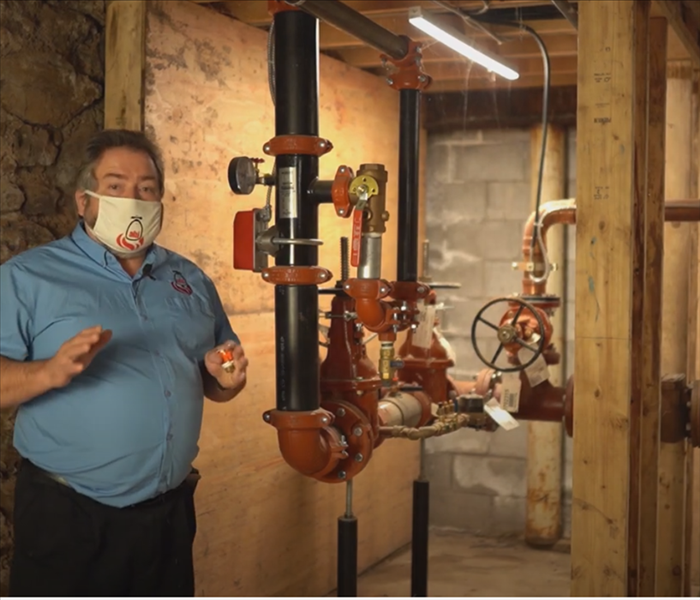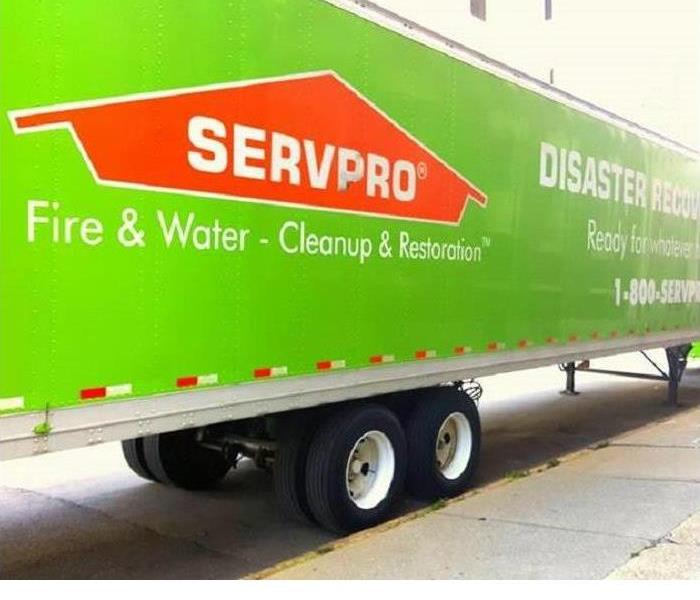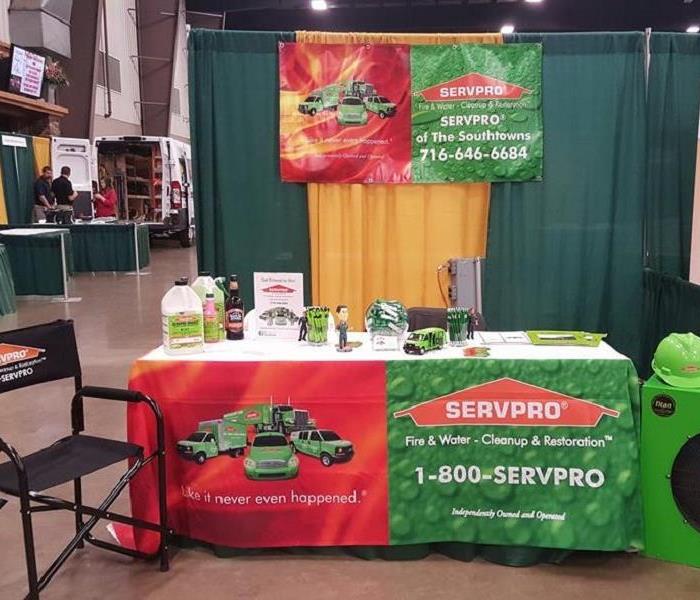VIDEO: The Anatomy of a Commercial Sprinkler System
4/7/2021 (Permalink)
We partnered with ABJ Fire Protection's John Sprandel on a series of fire safety videos aimed at educating Western New York's commercial property professionals.
In this video, John dives deep into the anatomy of a commercial sprinkler system, including how to operate it in case of emergency.
Transcript:
Your Commercial Sprinkler System
So we're in the basement of the facility where the water service enters.
Now the water service provides water to the domestic facilities - your toilets, your showers, your sinks, your water fountains.
It also separates to provide water for your fire protection system.
How Sprinkler Systems Discharge
Now, your fire protection system is piped throughout the building to individual sprinkler heads located in all areas of the building. These sprinklers are individually activated, through a frangible bulb in this particular case. That's designed to discharge when the temperature reaches 155 degrees so not all the sprinklers go off at the same time, only the ones that are exposed to that particular temperature. So, contrary to popular belief or the movies, only one sprinkler head is usually what it takes to put out a fire.
Backflow Prevention
Now, where we have the water service entering, we have a device that's called a backflow preventer. The back flow preventer prevents any contaminants from entering into the public water supply. The fire department or the fire sprinkler system also has a double check backflow preventer.
Why is it important to know those features in your facilities? You have to distinguish “where is the water coming from?” Is it from the domestic service or is it from the fire sprinklers?
Fire Alarms and Sprinkler Systems
The fire sprinkler system has a device installed on it called a flow switch. This is a water flow switch that activates within 60 seconds when water is discharging from one of these sprinkler heads. So not only does the fire department know within 60 seconds that a fire has occurred, but there's also water discharging and then the tenants throughout the facility will also know when the alarms go off that it's time to leave.
The difference between the fire system and a domestic water system is if there is to be a failure of the piping (say it would freeze and break), there's really no way to indicate that that water is flowing. So it's important to know what one of these valves you have to close in order to mitigate that water damage.
One of the things that we can work with you on is identifying, what particular case, what particular valve. We could do that with each individual facility.
Testing and Maintaining Sprinkler Systems
So how do we test this fire sprinkler system? We don't discharge water inside the building. What we do is we install a valve that simulates the water flow through one sprinkler head to ensure that that will activate the alarm system. We install a valve, we test it and then it flows for 40 to 60 seconds. Then it activates an alarm on the fire alarm panel and it will send a signal to the fire department, who will be notified and respond.
The audio visual devices throughout the building will also be going off so you know that it's time to evacuate.
The water service also provides water to the domestic services - your sinks, your showers, your water fountains, your toilet fixtures. What we have is a control valve. We have a bypass. That bypass will allow us to work on the meter. Then we have a meter that monitors how much water is used or consumed and then we have a backflow preventer with separate control valves.
The control valves on each side allow us to do any maintenance or repairs on that particular backflow preventer. On a domestic service, this backflow preventer is a little bit different than the one on the fire service. This one is a little bit more protective of the water supply. It's actually called a reduced pressure zone, or an RPZ backflow preventer.
The Difference Between Fire and Domestic Water Supplies
One of the differences between a fire service water supply and a domestic service water supply is that the device that's installed on the fire system, or a flow switch, will indicate that there's water flow within 60 seconds. If something were to occur on a domestic water service, there's no activation of any alarm or any device that would indicate that there's water flowing.
If for some reason the heaters failed and the pipe froze and it broke you may not see that particular situation until someone sees water flowing out of a door or they look down in the basement and see two or three inches of water on the floor.
It's important that these systems and these devices are properly maintained on a regular basis. Backflows need to be inspected and checked once a year.
So those are the type of services that my company provides and we'd be happy to help if there's ever any need for repairs.
Emergency Pre-Planning
In summary, one of the things that I want you to make sure you take away from this is that when an event occurs it may become confusing to remember which valve you need to close. So it's important to establish that pre-plan and that's what Dan (from SERVPRO of The Southtowns) and myself are here for. It's by taking those steps that we can help mitigate damage control and loss when an event occurs






 24/7 Emergency Service
24/7 Emergency Service




